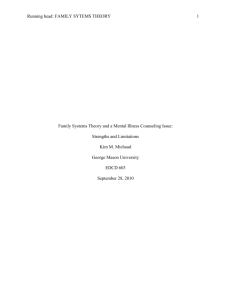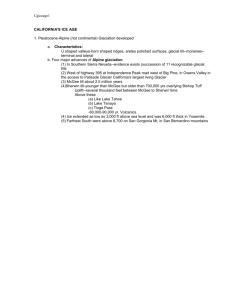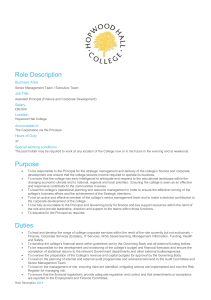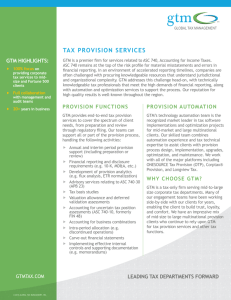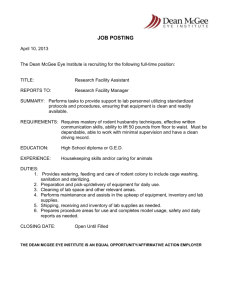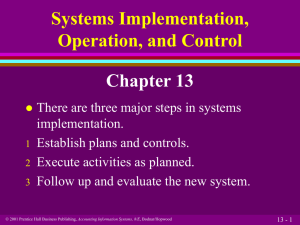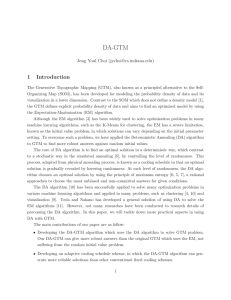MIDLANDS STATE UNIVERSITY FACULTY OF COMMERCE
advertisement
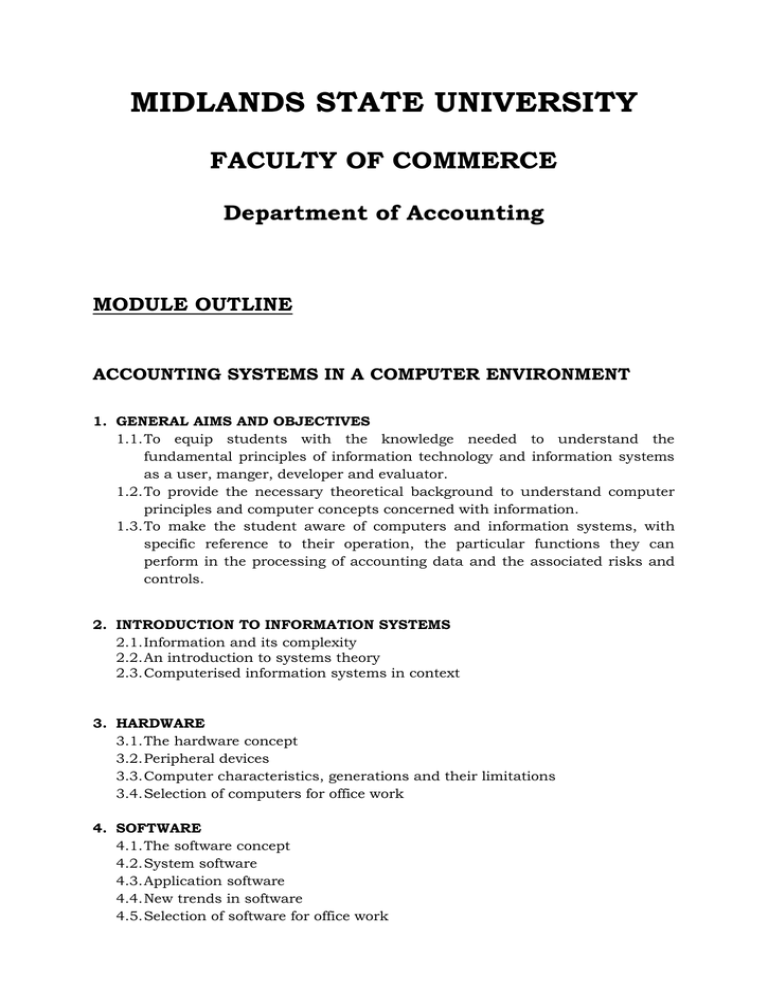
MIDLANDS STATE UNIVERSITY FACULTY OF COMMERCE Department of Accounting MODULE OUTLINE ACCOUNTING SYSTEMS IN A COMPUTER ENVIRONMENT 1. GENERAL AIMS AND OBJECTIVES 1.1. To equip students with the knowledge needed to understand the fundamental principles of information technology and information systems as a user, manger, developer and evaluator. 1.2. To provide the necessary theoretical background to understand computer principles and computer concepts concerned with information. 1.3. To make the student aware of computers and information systems, with specific reference to their operation, the particular functions they can perform in the processing of accounting data and the associated risks and controls. 2. INTRODUCTION TO INFORMATION SYSTEMS 2.1. Information and its complexity 2.2. An introduction to systems theory 2.3. Computerised information systems in context 3. HARDWARE 3.1. The hardware concept 3.2. Peripheral devices 3.3. Computer characteristics, generations and their limitations 3.4. Selection of computers for office work 4. SOFTWARE 4.1. The software concept 4.2. System software 4.3. Application software 4.4. New trends in software 4.5. Selection of software for office work 5. COMPUTER SYTEMS AND DATA COMMUNICATION 5.1. Communication theory 5.2. Connecting computers 5.3. Components of a data communication network 5.4. Data communication networks 5.5. The internet 6. THE ROLE OF INFORMATION AND COMMUNICATION TECHNOLOGIES IN BUSINESS 6.1. Types of information systems – based on its uses 6.2. Uses of information systems 6.3. Impact of computers 6.4. Opportunities, advantages and risks of using computers in business 7. THE MANAGEMENT OF INFORMATION SYTEMS 7.1. The information systems strategy 7.2. Managing the information systems function 7.3. Managing information systems projects 8. DEVELOPING NEW INFORMATION SYSTEMS 8.1. Reasons why systems become obsolete or outdated 8.2. The systems development lifecycle 8.3. Alternative ways of developing or acquiring information systems 9. INFORMATION SYSTEM CONTROLS 9.1. Computer crime 9.2. Approach to security 9.3. Controls 9.4. Security measures 9.5. Regulation and legislation RECOMMENDED TEXTS 1. Wessels, PL, Grobelaar, E , McGee, A , & Prinsloo, GTM. Information Systems In the South African Business Environment 2. Summers EL, Accounting Information Systems 3. Bodnar and Hopwood, Accounting Information systems 4. O` Brien J, Management Information Systems japuvt@msu.ac.zw 0772 890 764
